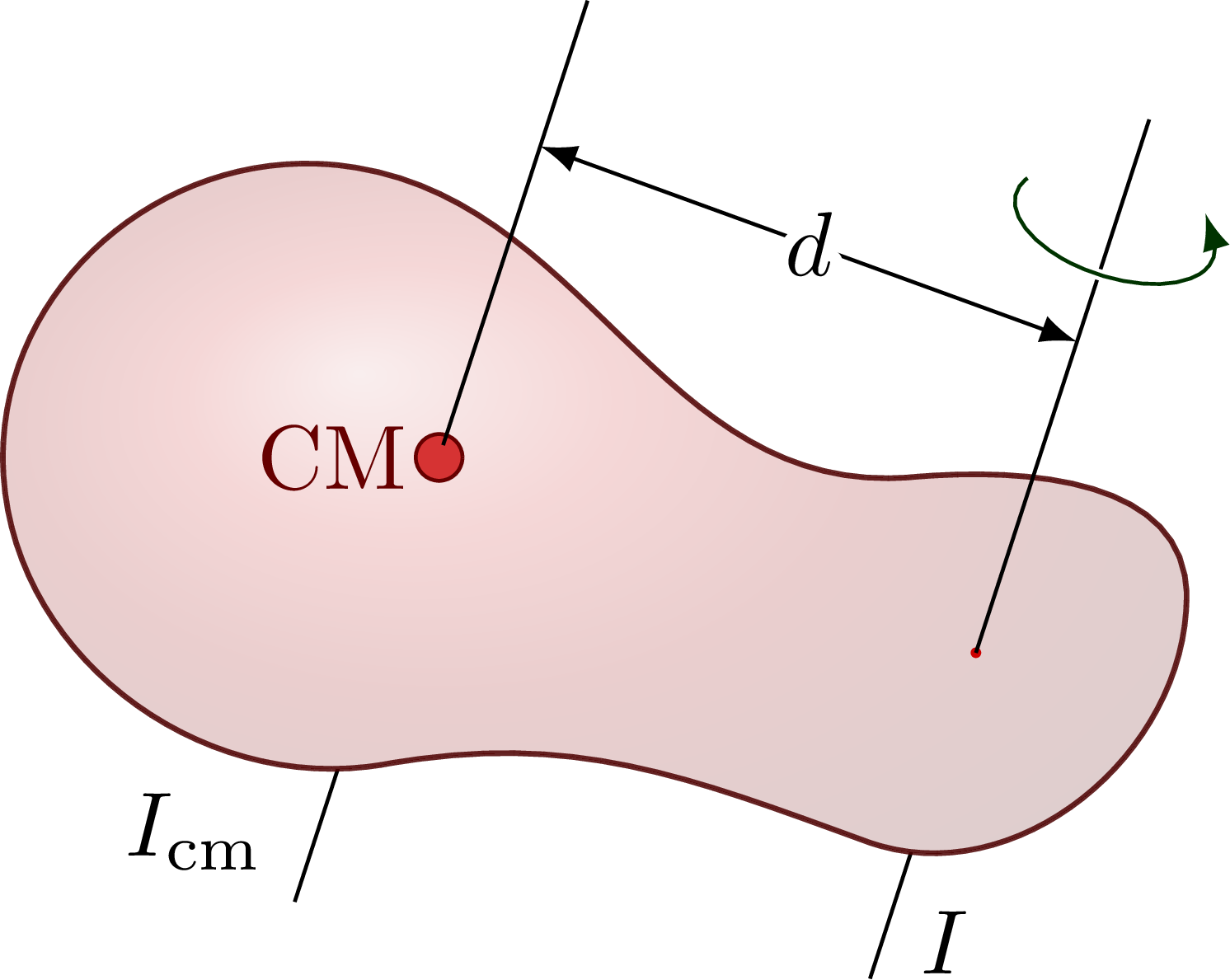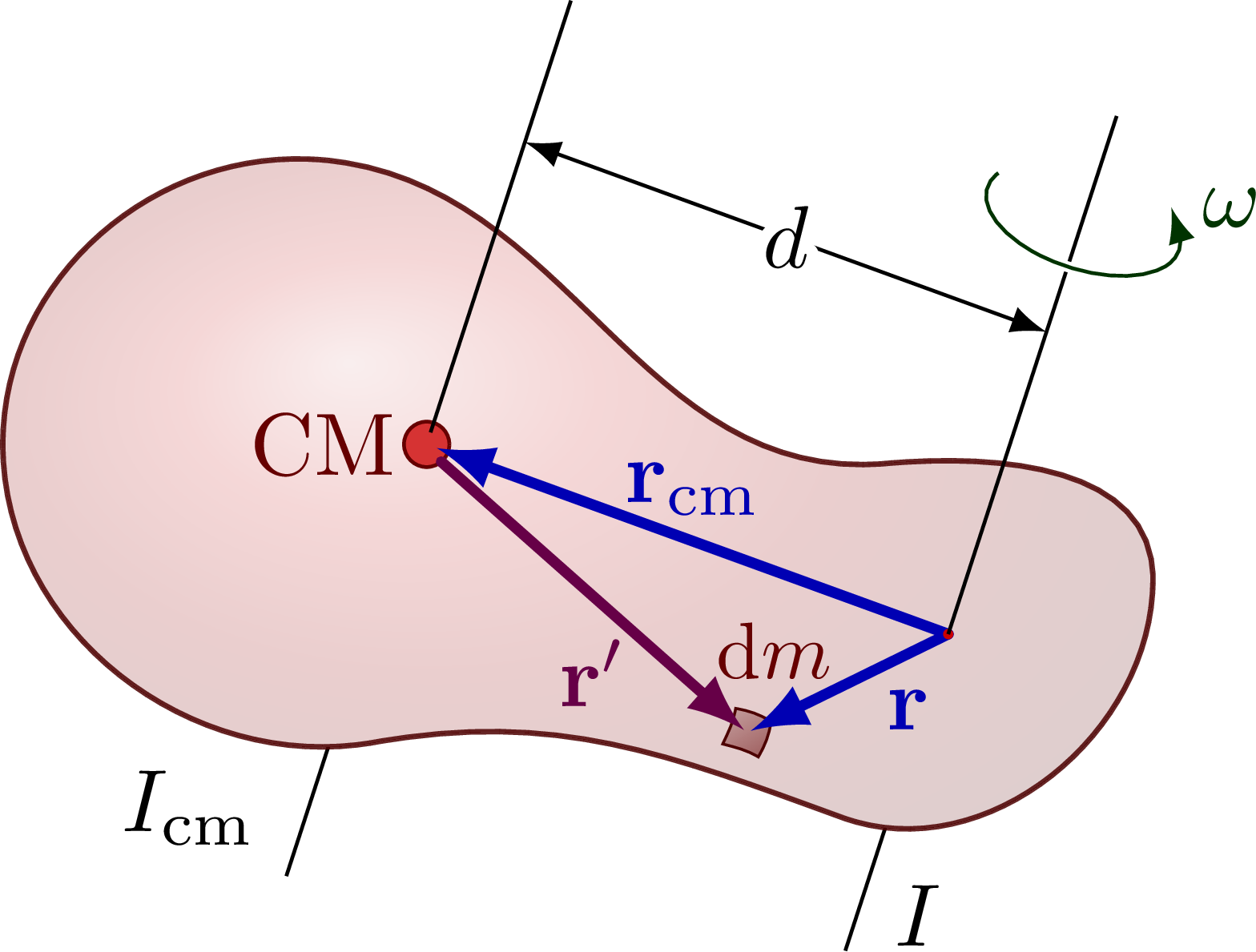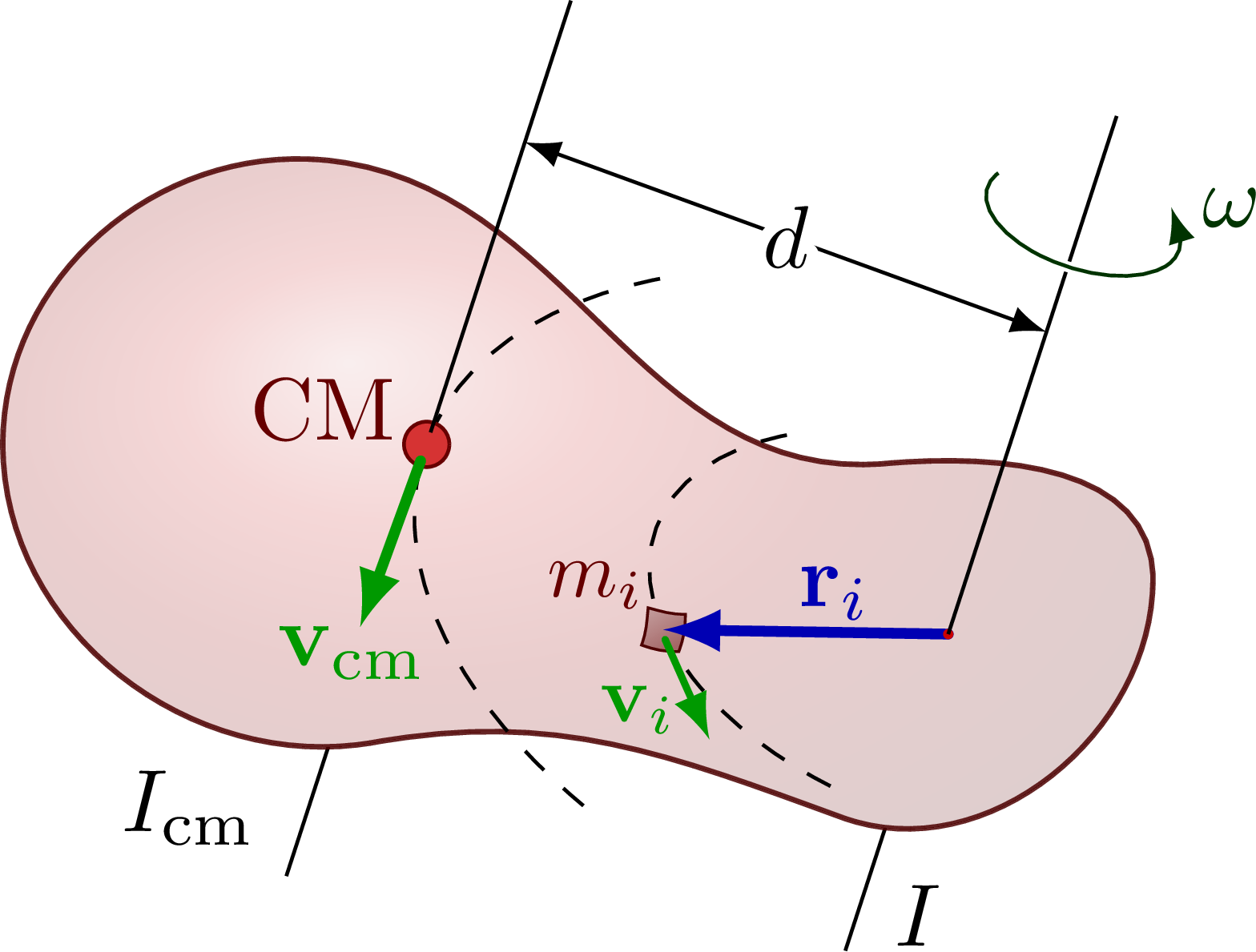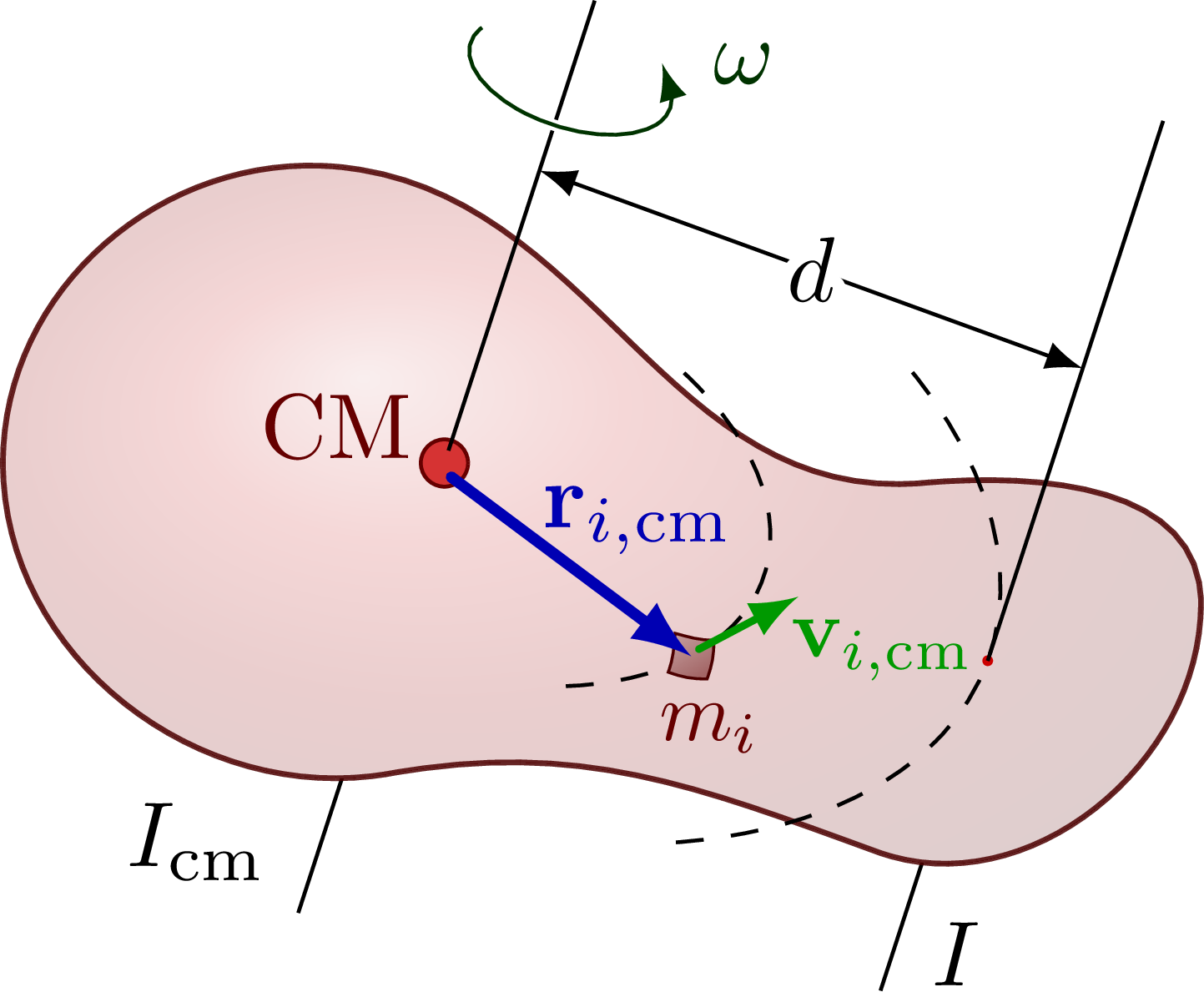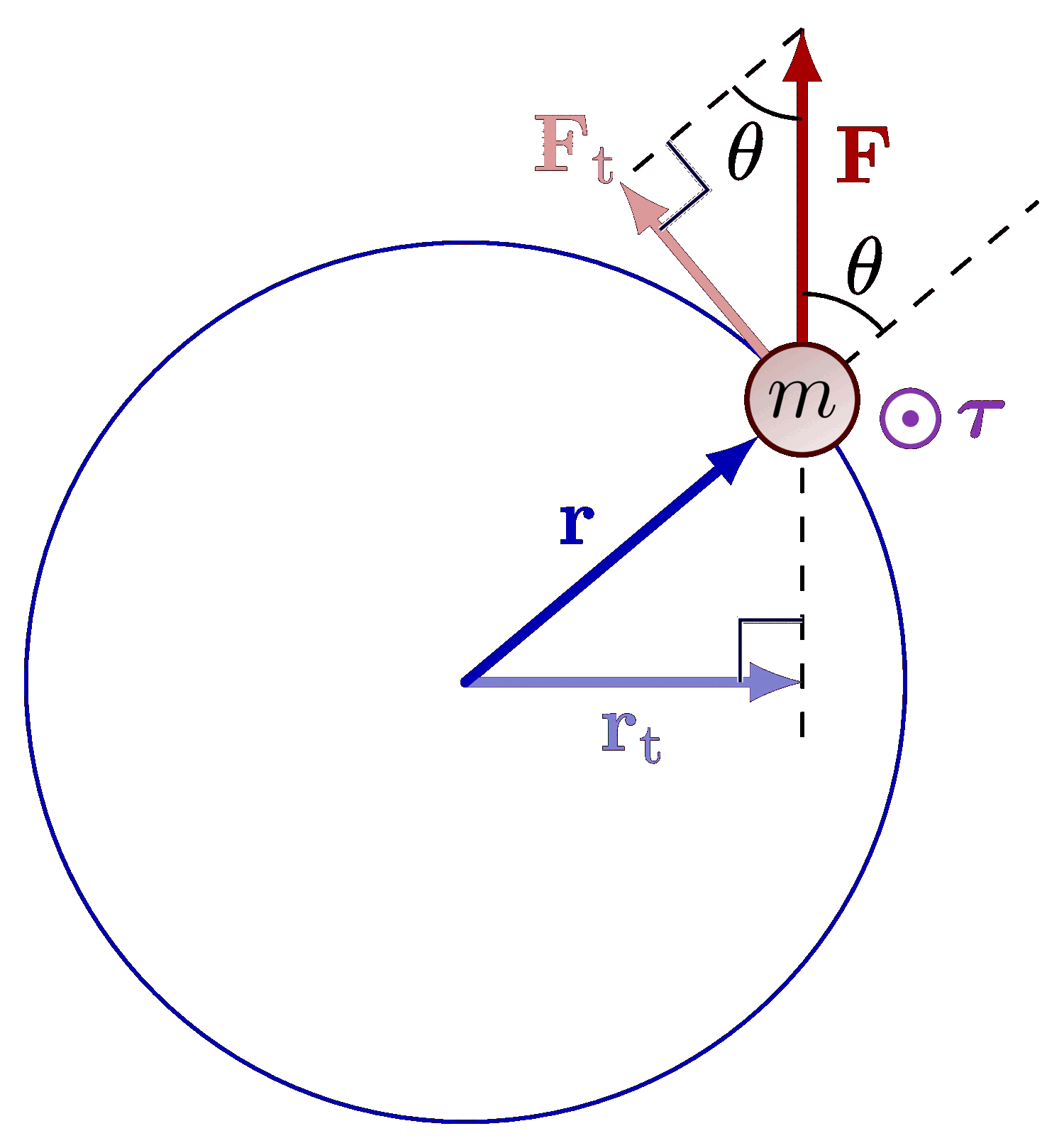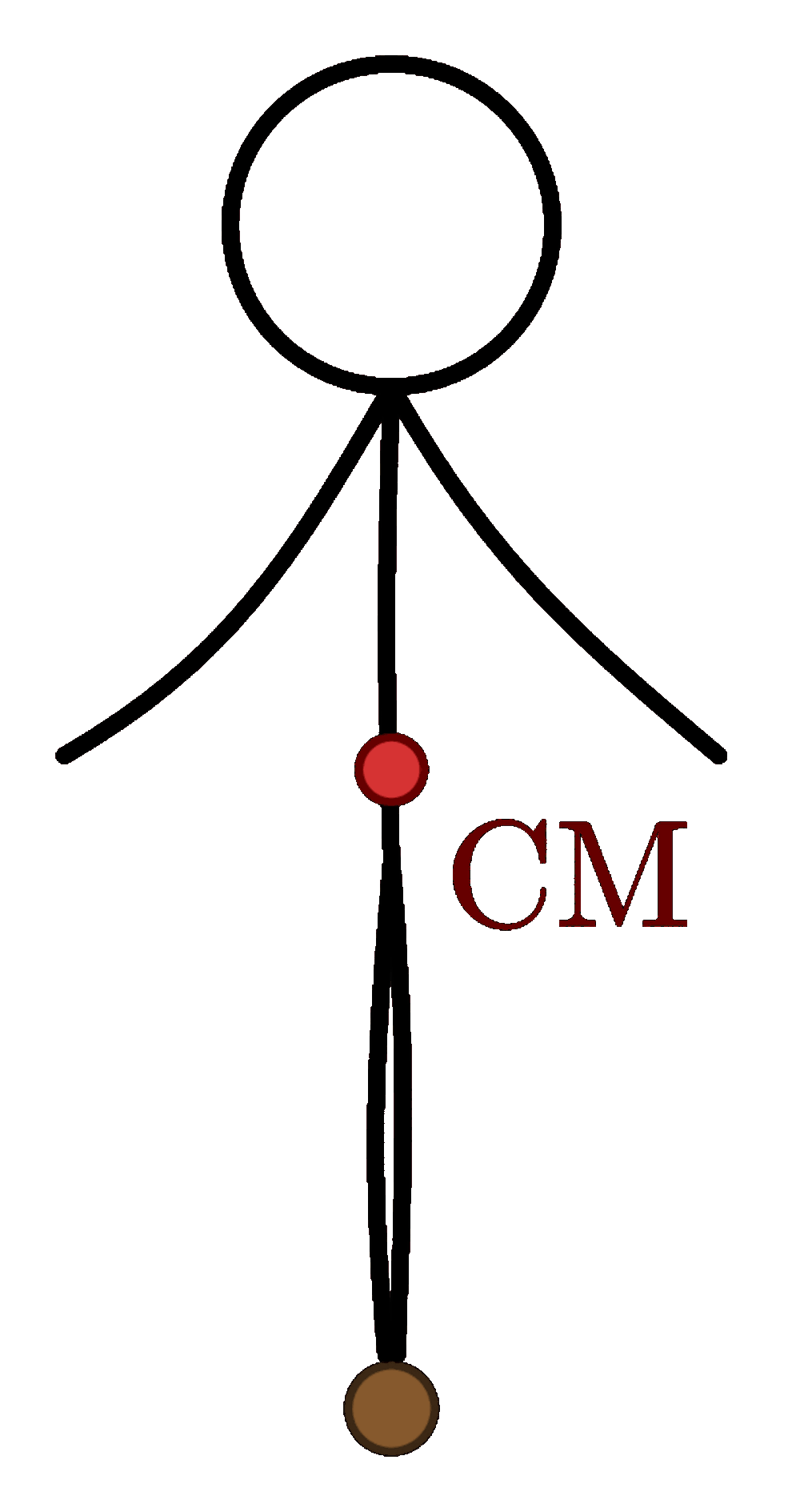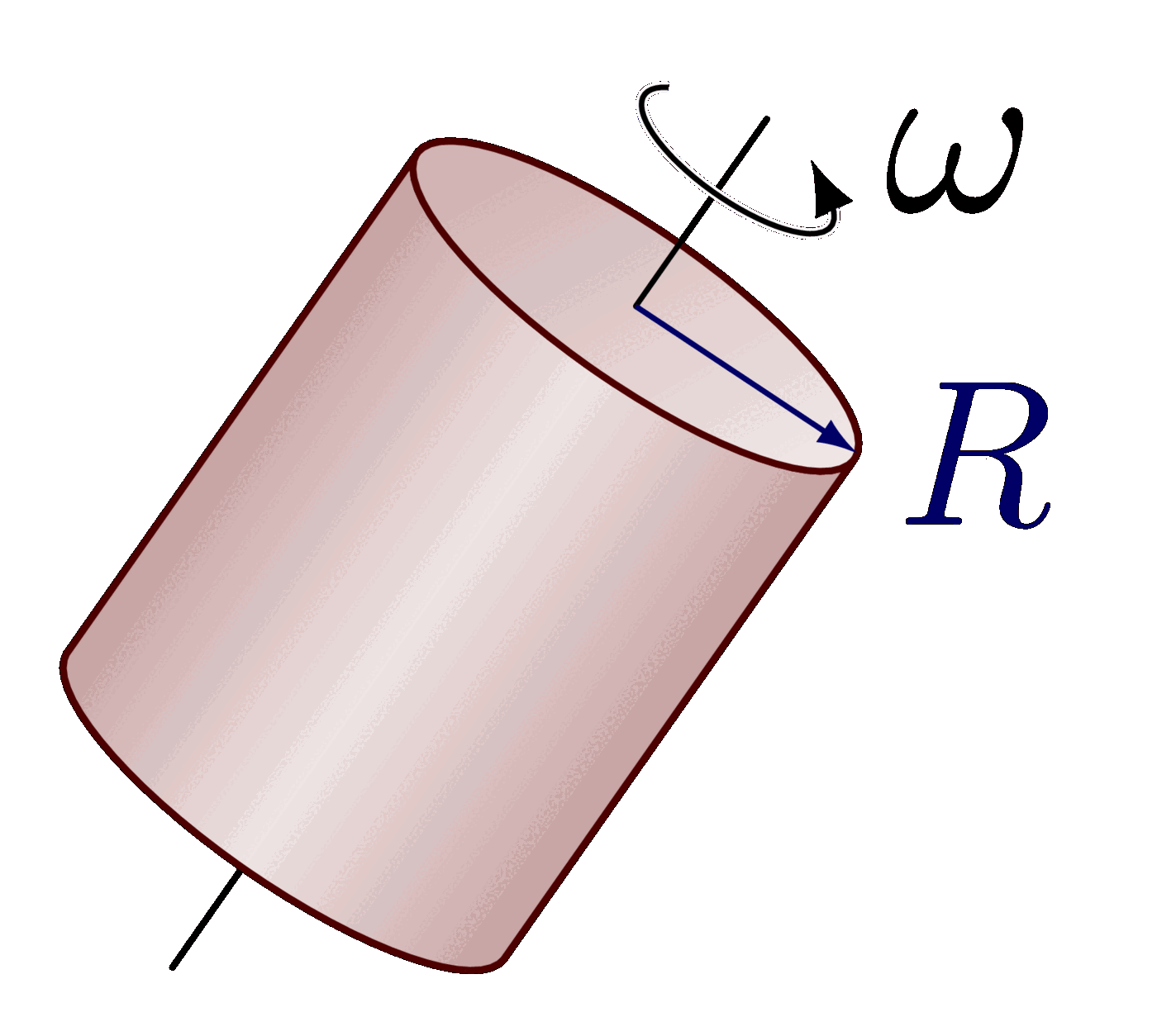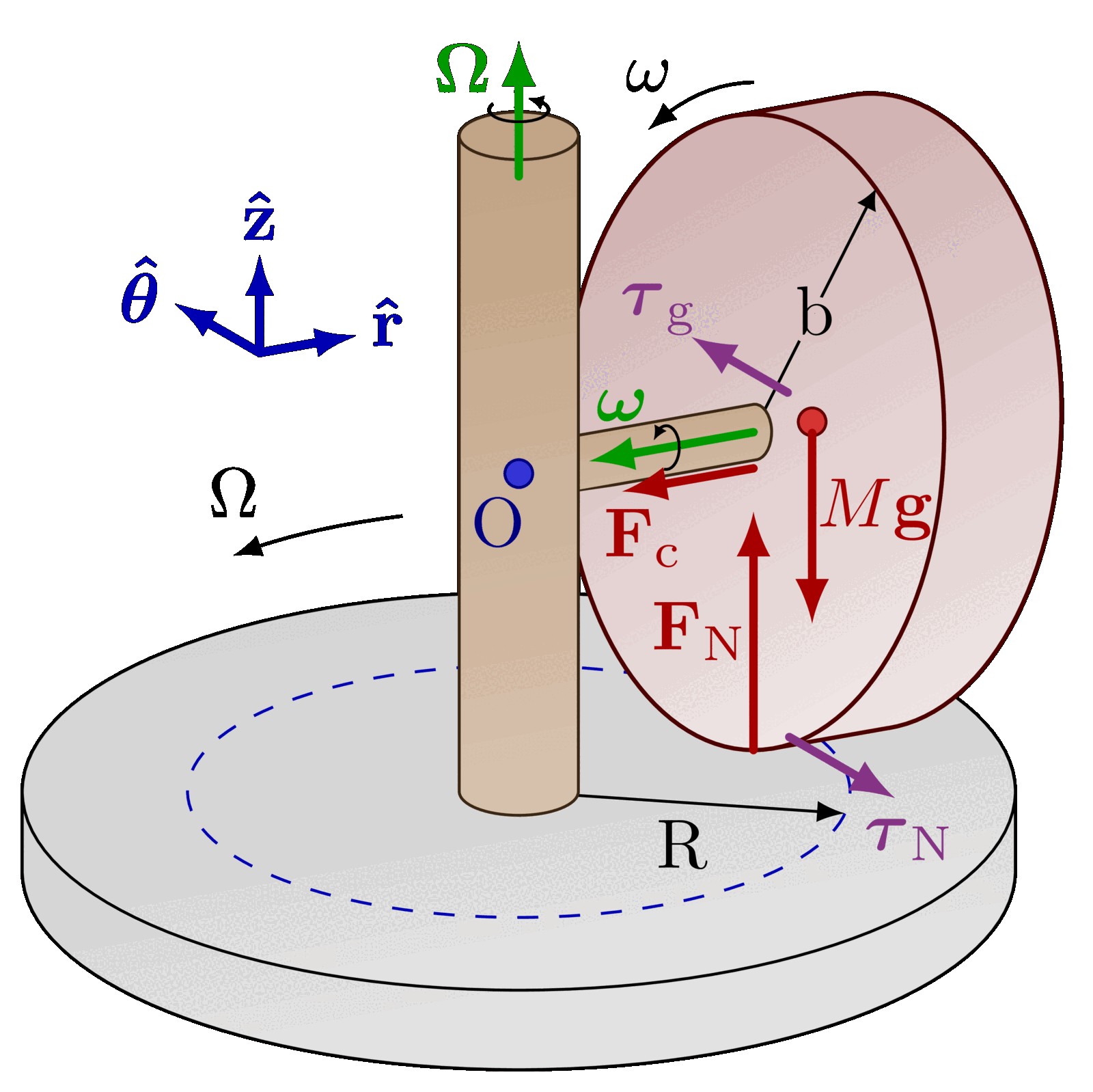The parallel axis theorem (or Steiner’s theorem).
Edit and compile if you like:
% Author: Izaak Neutelings (August 2021)\documentclass[border=3pt,tikz]{standalone}\usepackage{physics}\usepackage{tikz}\usepackage[outline]{contour} % glow around text\usetikzlibrary{calc}%\usetikzlibrary{angles,quotes} % for pic%\usetikzlibrary{arrows.meta}%\usetikzlibrary{patterns}\tikzset{>=latex} % for LaTeX arrow head\contourlength{1.35pt}\colorlet{xcol}{blue!70!black}\colorlet{xcol'}{xcol!50!red!80!black}\colorlet{vcol}{green!60!black}\colorlet{myred}{red!65!black}\colorlet{mydarkred}{red!40!black}\colorlet{mypurple}{blue!60!red!80}\colorlet{mydarkgreen}{green!20!black}\tikzstyle{rvec}=[->,xcol,very thick,line cap=round]\tikzstyle{vvec}=[->,vcol,very thick,line cap=round]\tikzstyle{CM}=[mydarkred,fill=red!80!black!80]\tikzstyle{mass}=[line width=0.6,draw=red!30!black, %rounded corners=1,top color=mydarkred!30,bottom color=mydarkred!10,shading angle=30]\tikzstyle{dark mass}=[line width=0.3,red!30!black, %rounded corners=1,top color=mydarkred!40,bottom color=mydarkred!60,shading angle=30]\def\r{0.05} % pulley small radius\tikzset{pics/rotarr/.style={code={\draw[white,very thick] ({#1*cos(200)},0) arc(-200:30:{#1} and {#1/2}) --++ (125:0.1);\draw[->,mydarkgreen] ({#1*cos(200)},0) coordinate (W1) arc(-200:20:{#1} and {#1/2}) node[midway] (W2) {} --++ (125:0.1) coordinate (W3);}},pics/rotarr/.default=0.4,}\begin{document}
Click to download: dynamics_moment_of_inertia_parrallel_axis.tex • dynamics_moment_of_inertia_parrallel_axis.pdf
Open in Overleaf: dynamics_moment_of_inertia_parrallel_axis.tex


